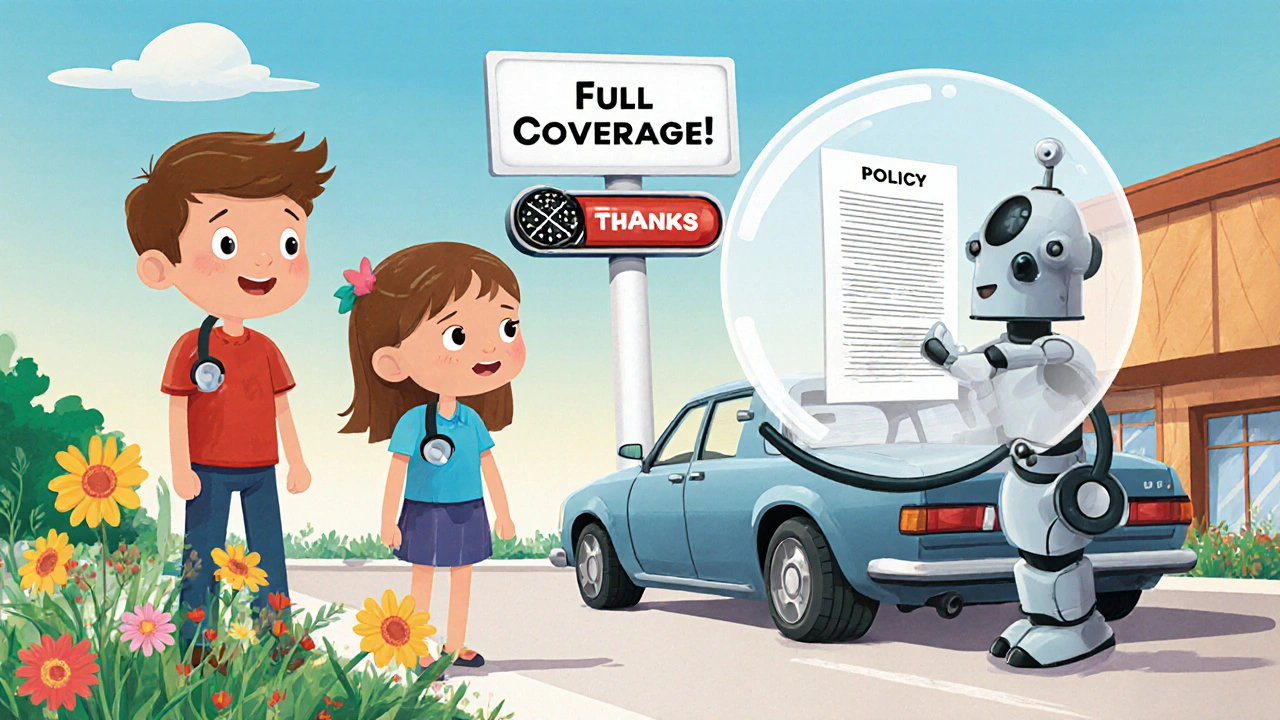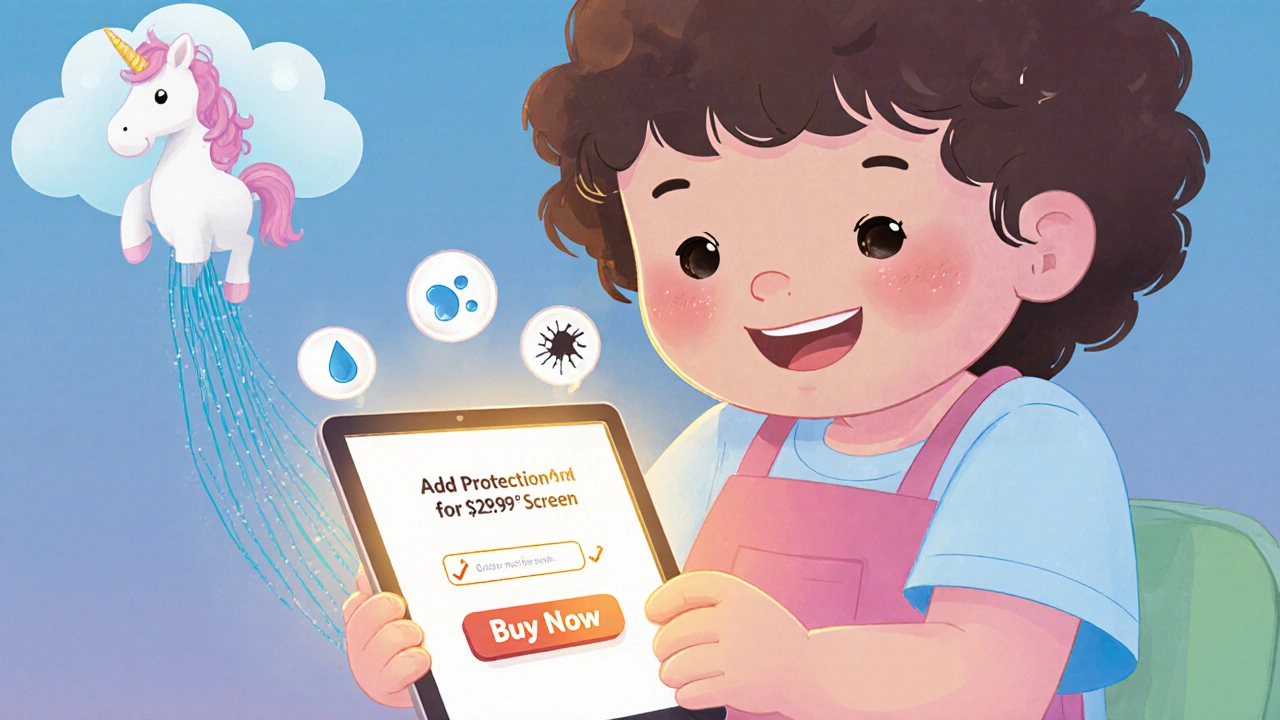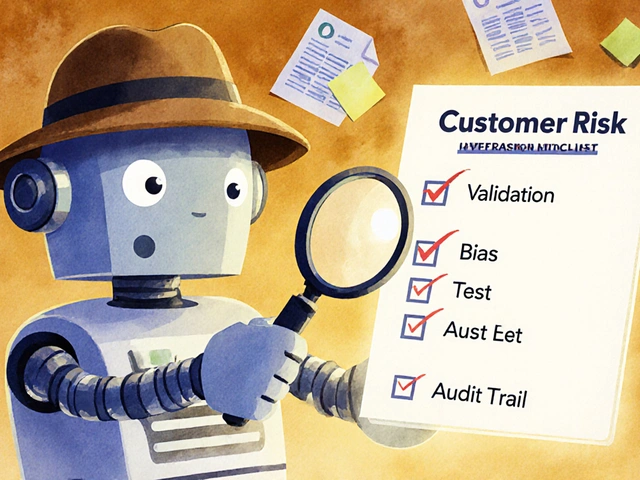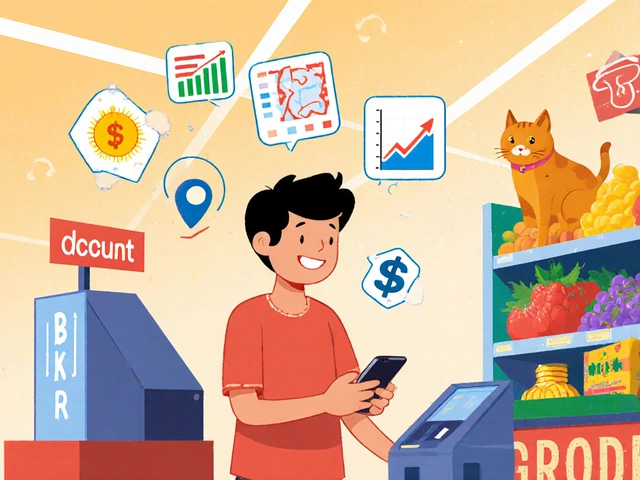Insurance Coverage Calculator
Calculate Your Coverage Costs
Estimate the cost of embedded insurance for common products and understand what's typically included.
When you book a flight and see a checkbox for travel insurance at checkout, you’re not being upsold-you’re being served. That’s embedded insurance in action. It’s not a separate app, not a phone call to a broker, not a 10-page PDF you have to read before clicking ‘Agree.’ It’s insurance woven into the moment you already need it-right as you’re buying something else.
Most people don’t think of insurance as something you buy while ordering a new phone or renting a car. But that’s exactly where it’s growing fastest. In 2024, 45% of smartphone buyers added protection at checkout. Over 68% of travelers booked travel insurance during flight purchases. And by 2027, Gartner predicts nearly 40% of all property and casualty insurance will be sold this way. This isn’t a niche trend. It’s reshaping how insurance works.
How Embedded Insurance Actually Works
Embedded insurance doesn’t appear out of nowhere. It’s built using APIs-tiny digital bridges that let your phone retailer talk to an insurer, or your car dealership share your details with a policy provider-all without you typing anything extra.
Here’s how it looks in practice: You buy a laptop online. At checkout, the site says, “Add protection for $29.99. Covers drops, spills, and hardware failure for two years.” You click yes. That’s it. No forms. No ID upload. No waiting for an email. The system pulls your name, shipping address, and purchase amount, checks your credit score (if needed), and issues a policy instantly. Coverage starts the moment your order ships.
This works because modern insurance platforms-like Sure, Embed, and Slice-have built cloud-based underwriting engines that can assess risk in seconds. Traditional insurance takes days because it relies on manual forms and human review. Embedded insurance skips the middleman. It uses real-time data from the transaction to make decisions. That’s why conversion rates jump from 5-10% for standalone policies to 25-50% when offered at checkout.
Where It’s Already Everywhere
You’ve probably used embedded insurance without realizing it. Here are the biggest areas where it’s taken root:
- Travel: Airlines, hotels, and ride-share apps like Uber now offer trip cancellation, lost luggage, and emergency medical coverage during booking. Allianz’s partnership with Airbnb led to 85% customer satisfaction-far above the industry average of 62%.
- Consumer Electronics: Apple, Best Buy, and carriers like Verizon bundle device protection into phone sales. Trustpilot reviews show an average 4.2/5 rating for these programs, with users praising instant activation and simple claims.
- Automotive: Car dealerships and online platforms like Carvana now offer extended warranties and mechanical breakdown insurance at financing checkout. About 22% of new car buyers in the U.S. now choose embedded auto coverage.
- Financial Services: Payment protection insurance is now common when taking out a loan or opening a credit card. If you lose your job, the policy covers your minimum payments for a few months.
These aren’t random add-ons. They’re calculated responses to where people are already spending money-and where they’re most vulnerable. Buying a phone? You’re worried about dropping it. Booking a trip? You’re worried about getting sick. The insurance matches the anxiety.
Why Consumers Love It
People don’t like insurance because it feels complicated, expensive, and irrelevant until something goes wrong. Embedded insurance fixes that.
A 2024 J.D. Power study found customers who bought embedded insurance had a Net Promoter Score (NPS) of 68. For traditional insurance, it was 42. Why? Because it’s convenient. Because it’s clear. Because you don’t have to think about it.
Reddit threads like r/PersonalFinance show 78% of users approve of travel insurance bought during flight booking. One user wrote: “I used to skip it because I didn’t know where to start. Now it’s one click. I feel protected.”
Millennials and Gen Z drive most of this adoption. They grew up with seamless digital experiences-streaming, shopping, banking-all in one app. They expect the same from insurance. Baby Boomers? Only 15% use it. That gap isn’t just generational. It’s technological.

The Dark Side: When It Feels Manipulative
Not all embedded insurance is good. Some companies use it to trick people.
“Dark patterns” are design tricks that make you feel pressured. A checkbox pre-checked. A tiny disclaimer. A “No thanks” button that’s grayed out or buried. One electronics retailer faced a class action lawsuit in 2023 for hiding coverage limits in fine print. Customers thought they were getting “full protection,” but the policy excluded cracked screens from drops.
Another issue? Lack of choice. You’re only shown one or two options. No comparison. No alternative providers. That’s convenient-but it’s not competitive. You might end up paying more than you would if you shopped around.
And then there’s revenue sharing. The retailer gets a cut of every policy sold. That creates an incentive to push insurance-even when it’s not needed. A 2024 Aite Group survey found 37% of customers were confused about what their coverage actually included. Clear disclosure is the fix. Companies that use bold, plain-language summaries see 63% fewer complaints.
How Businesses Benefit
For retailers and service providers, embedded insurance isn’t just about helping customers. It’s about making money.
Insurers cut customer acquisition costs by up to 70%. Instead of spending thousands on ads or agents to find one buyer, they get access to a ready-made audience-people already in buying mode. That’s why companies like Chubb and Allianz are building their own embedded platforms instead of just partnering with others.
For the retailer? It’s a new revenue stream. A $30 protection plan on a $1,000 phone? That’s 3% gross margin. Multiply that across millions of sales, and it adds up fast. In Europe, the embedded insurance market is estimated at $3 trillion in potential value. That’s bigger than the entire U.S. auto insurance industry.
And it’s not just profit. It’s loyalty. When you offer something that genuinely protects your customer, they trust you more. A study from McKinsey showed brands using embedded insurance saw 20% higher repeat purchase rates.
The Tech Behind It
Behind every seamless insurance offer is a stack of technology:
- APIs: Connect your e-commerce platform to the insurer’s system. No manual data entry.
- Real-time underwriting engines: Use AI to assess risk in under 10 seconds based on purchase data, location, device type, and user history.
- Compliance tools: Ensure GDPR, CCPA, and state insurance laws are followed-especially around data sharing.
- Secure data handling: Most platforms use SOC 2 Type II and ISO 27001 certification to protect personal info.
Implementation time? For a tech-savvy company, it’s 14-18 weeks. For a traditional business? 20-26 weeks. The biggest hurdle? Not the tech. It’s getting legal, sales, and IT teams to agree on how to share data and split revenue.

What’s Next
Embedded insurance is getting smarter.
Lemonade launched “Embedded Home+” in April 2024. It uses data from smart thermostats and security cameras to adjust your home insurance premium in real time. If your smoke detector hasn’t triggered in 18 months? Your rate drops. If your doorbell shows frequent package deliveries? Your theft coverage increases automatically.
Uber’s partnership with Allianz in June 2024 created dynamic ride-share insurance. Coverage changes based on how long you’re driving, the weather, and traffic conditions. If you’re driving in a snowstorm at night? You get extra liability protection. When you stop? It turns off.
By 2026, Gartner predicts 45% of embedded insurance programs will use AI for dynamic pricing. Blockchain is being tested for instant claims-think: your phone cracks, you snap a photo, and $200 is wired to your account in minutes.
The biggest growth? Southeast Asia. Boston Consulting Group projects a 300% increase in embedded insurance adoption there by 2027. Why? Because traditional insurance is too slow, too expensive, and too distant. Embedded insurance skips the gaps entirely.
Is It Right for Everyone?
Embedded insurance works best for simple, predictable risks: phone damage, trip cancellations, rental car collisions. It doesn’t work for complex needs like business liability, long-term care, or chronic illness coverage. Those require deep underwriting, medical exams, and ongoing adjustments.
It’s also not a replacement for traditional insurance. It’s a complement. You still need a good health plan. You still need life insurance if you have dependents. But for the small, everyday things that keep you up at night? Embedded insurance fills the gaps-fast, cheap, and frictionless.
The protection gap-the difference between what people lose and what they’re insured for-was $1.2 trillion globally in 2022. Embedded insurance is the fastest way to close that gap. It’s not perfect. But it’s the most scalable solution we’ve seen in decades.
Frequently Asked Questions
Is embedded insurance cheaper than buying it separately?
Sometimes, but not always. Embedded insurance often has lower overhead, so prices can be competitive. But because you’re buying it at checkout with limited options, you might miss out on better deals elsewhere. Always check the coverage details-what’s excluded matters more than the price tag.
Can I cancel embedded insurance after purchase?
Yes, in most cases. Federal law in the U.S. requires a 14-day cooling-off period for most add-on insurance products. You can cancel and get a full refund if you haven’t filed a claim. But some retailers hide this info. Always look for the cancellation policy before clicking “Buy.”
Does embedded insurance use my personal data?
Yes. To issue a policy instantly, the system needs your name, address, purchase amount, and sometimes your credit score or device serial number. Reputable providers use encryption and comply with GDPR and CCPA. But if you’re uncomfortable sharing data, skip it. You can always buy insurance later through a traditional provider.
Which companies are leading in embedded insurance?
Specialized platforms like Sure, Embed, and Slice power many programs. Traditional insurers like Allianz, Chubb, and State Farm are building their own. Retailers like Apple, Amazon, and Uber are also launching their own embedded offerings. The leaders are the ones that make the experience feel invisible-no jargon, no delays, no surprises.
Will embedded insurance replace traditional insurance agents?
Not entirely. For simple, high-volume products like phone protection or rental car insurance, yes-it’s replacing agents. But for complex needs like commercial policies, family health plans, or retirement income strategies, human advice still matters. Embedded insurance is a distribution channel, not a replacement for the entire industry.




It’s fascinating how insurance has evolved from a bureaucratic nightmare into something that feels almost intuitive-like breathing. We used to think of coverage as this heavy, ominous thing you had to hunt down, fill out forms for, and then wait weeks to confirm. Now? It’s there, quietly, elegantly, as if it was always meant to be part of the transaction. There’s a poetry in that, really. The anxiety we carry around modern life-losing a phone, getting stranded mid-trip, breaking a laptop-isn’t going away, but now we have this subtle, digital safety net that doesn’t demand we become experts just to feel safe. It’s not perfect, sure. Dark patterns exist, and yes, sometimes it feels like you’re being nudged rather than served. But when done right, it’s not salesmanship-it’s empathy engineered. And if we can scale this kind of thoughtful design across more areas of life, maybe we’re not just selling insurance. Maybe we’re finally building a world where protection doesn’t feel like a chore.
Embedded insurance is just the next phase in the commodification of behavioral nudges via API-driven frictionless monetization. The real win here isn’t consumer convenience-it’s the marginal revenue per transaction (MRPT) uplift for retailers who offload underwriting risk to third-party insurers while capturing 20-40% of the premium as referral fees. The AI underwriting engines? They’re just glorified logistic regression models trained on purchase history and geolocation data. And don’t get me started on the data harvesting-your device serial, IP address, and credit score are now embedded in a 29.99-dollar warranty that doesn’t cover screen cracks. This isn’t innovation. It’s surveillance capitalism with a ‘protect your investment’ sticker on it.
It’s just a scam with better UI.